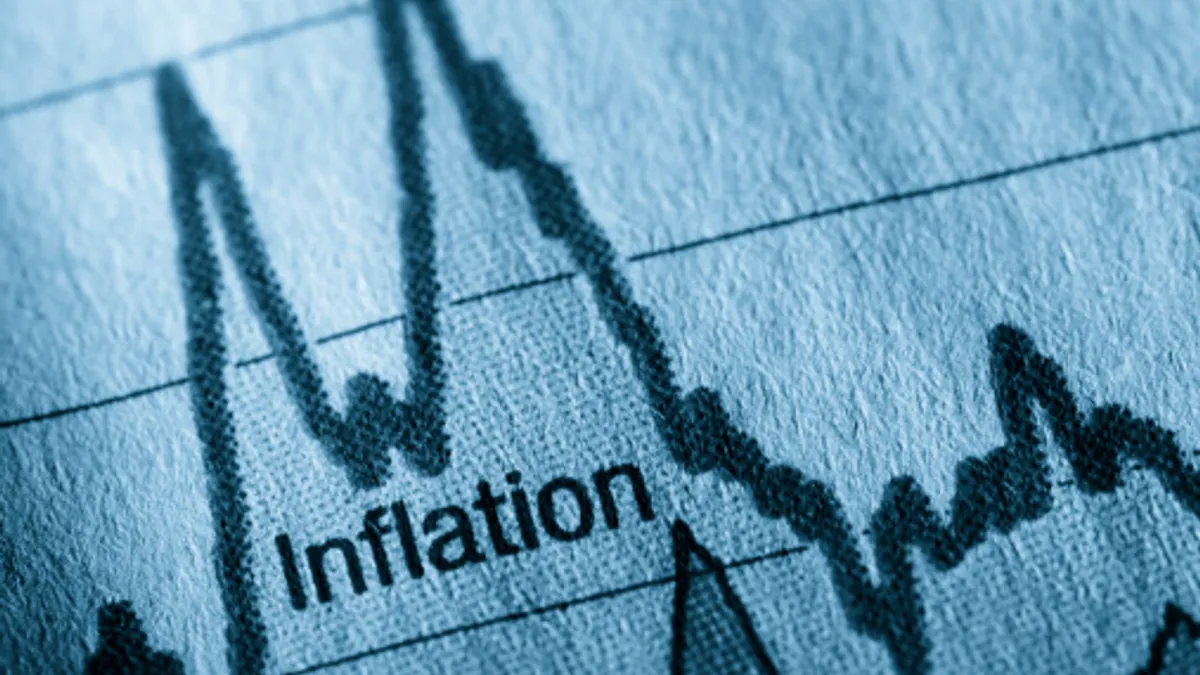Dive Brief:
- The year-over-year inflation rate for U.S. electricity prices reached 5.9% in May, up from 3.8% in January, according to Bank of America Institute, a think tank utilizing proprietary data to develop insights into consumer behavior and the economy.
- Utility payments — including electricity, gas, waste removal and water — declined 1.4% in the early months of 2024, but growth in electricity demand from artificial intelligence and industrial onshoring means any bill respite is likely short-lived, BofA analysts said in a July 2 research note, “Powering the revolution.”
- Electric vehicles and heat pumps are driving consumer electricity demand higher, while industrial onshoring and the rise of data centers and artificial intelligence are also putting upward pressure on prices, the analysts said. BofA Global Research estimates AI computing will require an additional 18 GW to 28 GW of generation capacity by 2026.
Dive Insight:
Consumers got some relief on utility bills early this year but electricity prices are expected to continue rising, according to BofA.
“Electricity demand is actually increasing, pressuring supply, and it may continue to do so for a long time as industrial onshoring and the AI revolution are both turbo-charging the need for generating capacity,” analysts wrote. “This demand for significant investment in generation and related distribution infrastructure could be a headwind to consumers' utility bills for the foreseeable future.”
U.S. electricity demand stagnated over the last decade, but the U.S. Department of Energy says some grid operators are now expecting annual demand growth of 5% to 6%.
And there is little consumers can do to reduce power consumption because electricity “is not really a discretionary item for households,” BofA said. “And usage is also being driven by some trends such as the need for increased cooling in response to longer and more frequent heatwaves.”
Industrial onshoring, driven in part by incentives in the Inflation Reduction Act and the Creating Helpful Incentives to Produce Semiconductors Act, is raising U.S. manufacturing capacity and its demand for electricity. “Given the long timelines in building large plants there is probably much more to come,” analysts said. “The AI revolution and industrial onshoring are likely to be multi-year — perhaps multi-decade — trends, so the demand for electricity may continue to ramp up from these sources for a long while yet.”
Rising demand means investment in new generation capacity and distribution infrastructure “will need to be sustained,” BofA analysts said. And despite fluctuations in fossil fuel prices, “the need for extra capacity in the electricity generation system may well act as a headwind to any prolonged drop in their utility bills.”
Data centers could consume 9% of the United States’ electricity generation by 2030 — double the amount consumed today, according to research from the Electric Power Research Institute. That rise is being led by AI queries and generation, which requires about ten times the electricity of traditional internet searches, according to EPRI.
AI, however, “can also be part of the solution to rising electricity demand, helping drive ‘smarter’ power grids that distribute electricity more efficiently to regions where demand is highest,” BofA said.
AI can help lower grid costs and reduce emissions from electricity generation, according to DOE — but the technology also poses significant risks if deployed “naïvely,” the agency said in an April report. Four categories of grid risks have emerged, including adversarial attacks against AI systems, unintentional failures of AI models, the use of AI to execute cyber or physical grid attacks, and supply chain compromises, the agency said.












